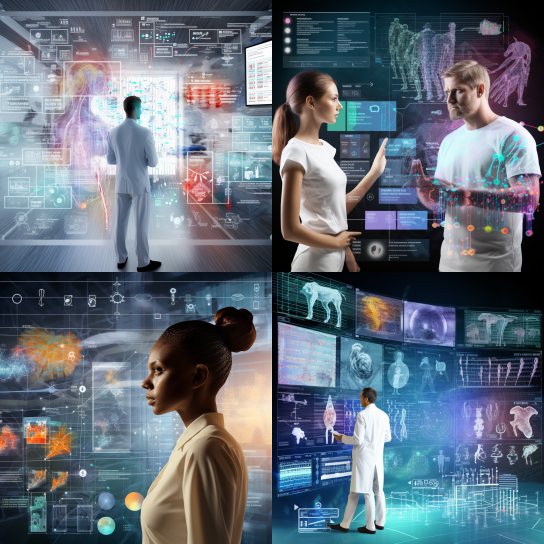WHY CANT WE TELL THAT TODAYS AI IS AS CLEVER AS HUMAN BEINGS?
WHY CANT WE TELL THAT TODAYS AI IS AS
CLEVER AS HUMAN BEINGS?
WHY CANT WE TELL THAT TODAYS AI IS AS CLEVER AS HUMAN BEINGS?
WHY CANT WE TELL THAT TODAYS AI IS AS CLEVER AS HUMAN BEINGS?
Generally, there are various paths towards building the intelligent machines that enables the humans to build the super-intelligent machines and provide ability to machines towards redesigning their own programming in order to increase their intelligence level, which is usually considered as the intelligence explosion. In contrast, the shielded human hunt is basically the emotion.
The breakthrough of AI technology can frighten the humanity in a way that machine are unable to effectively transmit the emotions. So, there may be possibility that AI can support us with the tasks and functions which usually not involves the feelings and emotion. Till now, AI machines are not able to control their process, for which they need the intelligence and mind of human beings.
Real "AI Buzz" | AI Updates | Blogs | Education
But AI development with same pace may cause threat to the humanity, because the self-learning ability may cause the AI machines to learn destructive things, which may cause killing of humanity in a drastic way. In general, there exist various characteristics which distinguish human level intelligence with Artificial intelligence and they include the following; Thinking ability; it can be both positive as well as neg- ative because of having emotions, which are not with AI machines.
The lack of machines emotion may lead to de- structive in a situation where emotions are required. Russel Stuart believes that machines would be able to think in a weak manner. In general, there are things that computers cannot do, regardless of how they are programmed and certain ways of designing intelligent programs are doomed to failure sooner or later.
Therefore, most accurate idea would be to think that it is never going to make the machines have a thought at least similar to human The lack of thinking ability of machines may cause lack in passing the behavioral test. What was later called the Turing Test, proposed that a machine be able to converse before an interrogation for five minutes for the year 2000 and in fact, it was partly achieved. It is concluded then, that the machines can actually think, although they can never have a sense of humor, fall in love, learn from experience, know how to distinguish the good from the bad and other attitudes of the human. Artificial Intelligence: A Modern Approach dedicates its last chapter to wonder what would happen if machines capable of thinking were conceived. Then it is when we ask ourselves if it is convenient to continue with this project, take risks and follow an unknown path and believe that what may happen will not be negative. Russel and Norvig believe that AI machines role are to be more optimistic.
They believe that intelligent machines are capable of ”improving the material circumstances in which human life unfolds” and that in no way can they affect our quality of life negatively. Reasoning; algorithms mimic the phased reasoning that people use to solve puzzles and guide logical conclusions. For complex tasks, algorithms may require huge computational resources; most of them experience ’combinatorial explosions’. Memory or required computer time will be astronomical with tasks of a certain size. Finding a more effective algorithm to solve the problem is a top priority. Humans usually use quick and intuitive judgment rather than gradual deductions modeled by ear- lier AI studies. I made progress using the ”sub-symbol” solution to the problem. The materialized approach of the agent highlights the importance of sensory – motor skills for higher reasoning.
The search of the neural network attempts to imitate the structure in the brain that generates this skill. The statistical approach to AI mimics human guessing abilities. Planning ability; the objection of those who defend human intelligence against that of machines is based on the fact that they do not possess creativity or consciousness. Planning and creativity could be defined as the ability to combine the elements at our disposal to give an efficient, or beautiful, or shrewd solution to a problem we are facing. That is, we call creativity what we have not yet been able to explain and reproduce mechanically in our behavior. However, the functioning of artificial neural networks can also be considered creative but little predictable and plan able. Action taking ability; the action taking ability of humans are based on emotions, deep thinking and its com- parison with how much it is beneficial for the human beings while AI only takes actions either based on their coding, therefore, the lack of emotions and comparison about good and bad increases threats. AI machines are actually very intellectually limited, although they may become brilliant in specialization.
A child in his earliest childhood is able to learn to put the triangle in the hollow of the triangle of the toy, can recognize the sounds of animals and begin to apply what he learned on a stage in different ones. Machines are not able to do this at the same time without being previously trained for each task. Generally, there is no neural network in the world capable of identifying objects, images, sounds and playing video games at the same time as people [36]. Its limitations are obvious even within the same field of action: when Google’s Deep Mind created a system to pass Atari video games, relatively simple for a computing entity due to its two-dimensional progress based on reflexes and trial and error, its neural networks they had to be trained every time a game was completed. Machines are not capable of transferring what they learn to other scenarios that catch them off guard as well as humans can adapt, make use of logic, creativity, ingenuity and reason in any situation, however strange and new they may be.
Knowledge representation; it includes the problems ma- chines which expresses the relationships between objects, properties, categories, objects, situations, events, states, and times. The potential cause and effect of knowledge repre- sentation is based on what we know about what others know of many other well-studied domains. The concept of ”what is present” is an ontology that officially describes a set of objects, relationships, concepts, and properties so that the softwares agent can significantly interpret it.
The semantics of this data are recognized as logic to describe roles and descriptions which usually realized as ontology web language classes, properties, and individuals. The most common ontology is called a top ontology that provides the basis of all other knowledge and acts as an intermedi- ary between domain ontology covering specific knowledge about a specific knowledge field. Such formal knowledge representation is based on knowledge using content-based indexing and searching, interpretation of scenarios, support for clinical decisions, automatic reasoning. Perception; the machine perception is the ability to derive aspects of the world using input signals from cameras, microphones, sensors, sonar etc., while the computer vision is the ability to analyze visual input. Learning ability; the development of new algorithm considerably helps the AI machines to learn to write like humans and is able to recognize and draw very simple visual concepts. Generally, the main virtue of human beings is their speed and diversity, when it comes to learning new concepts and applying them in new situa- tions. Computers usually have hard time generalizing from particular samples. In addition, to assessing the ability of the program to learn concepts, they asked people to reproduce a series of characters that had also been plotted by the ma- chine. Then, they compared them and asked different people what they thought had been done by humans and what by a program, in an adaptation of the classic Turing test that the researchers call visual Turing test. Basically the Turing test is that someone in a room is asking questions to determine if the answers and interactions they receive come from a person or a machine. Therefore, machine learning ability machines significantly makes it much better than that of human being.
The natural language process system; they give machines the ability to read and understand human language. A sufficiently powerful natural language processing system enables the use of user interfaces in natural language and gains direct knowledge from written sources such as news texts. Some simple natural language processing applications include information retrieval, text mining, machine translation etc. The general way to extract and process the natural language, it is essential to use semantic indexing. These indices are expected to increase efficiency as the user speeds up the processor and lower the cost of storing the data despite the user’s input being large.
Read More









Leave a Reply